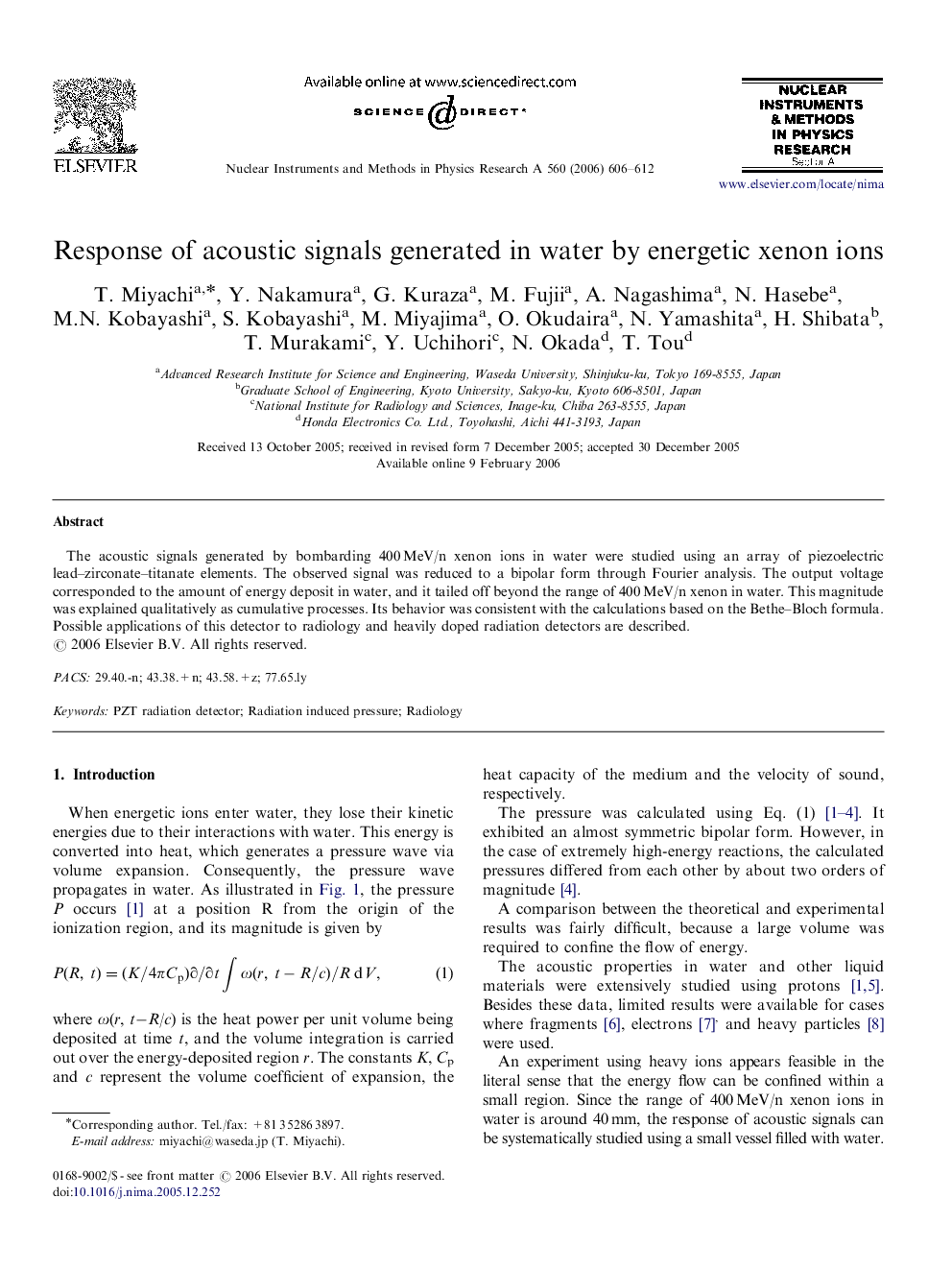| Article ID | Journal | Published Year | Pages | File Type |
|---|---|---|---|---|
| 1833126 | Nuclear Instruments and Methods in Physics Research Section A: Accelerators, Spectrometers, Detectors and Associated Equipment | 2006 | 7 Pages |
Abstract
The acoustic signals generated by bombarding 400 MeV/n xenon ions in water were studied using an array of piezoelectric lead–zirconate–titanate elements. The observed signal was reduced to a bipolar form through Fourier analysis. The output voltage corresponded to the amount of energy deposit in water, and it tailed off beyond the range of 400 MeV/n xenon in water. This magnitude was explained qualitatively as cumulative processes. Its behavior was consistent with the calculations based on the Bethe–Bloch formula. Possible applications of this detector to radiology and heavily doped radiation detectors are described.
Related Topics
Physical Sciences and Engineering
Physics and Astronomy
Instrumentation
Authors
T. Miyachi, Y. Nakamura, G. Kuraza, M. Fujii, A. Nagashima, N. Hasebe, M.N. Kobayashi, S. Kobayashi, M. Miyajima, O. Okudaira, N. Yamashita, H. Shibata, T. Murakami, Y. Uchihori, N. Okada, T. Tou,
